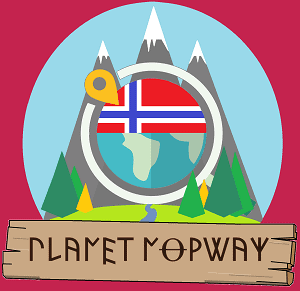When you think about volcanoes, Norway is not the country that comes to mind, however, few know that Norway is home to the World’s Northernmost volcano.
Beerenberg, located on the remote island of Jan Mayen is an active volcano that has erupted six times over the past 250 years. In addition, Norway is home to hundreds of active volcanoes located under sea level.
Last, but not least, the Oslo fjord area, Norway’s most populated area is packed with a volcanic history. Continue reading to learn more about the volcanic country of Norway.

Beerenberg
Norway is home to one active volcano above sea level, Beerenberg (pictured above). Dutch for “bear mountain,” Beerenberg is located on Norway’s arctic island of Jan Mayen.
At 2,277 meters high (7470 ft), Beerenberg extends across the southern end of Jan Mayen and is the world’s most northern active volcano.
Beerenberg has erupted six times over the past 250 years, most recently in 1985, when over 7 million cubic meters of lava flowed from the volcano.
Generally speaking, Beerenberg is difficult to visit; Jan Mayen is a remote island and remains largely untouched by humans.
Home to only a sparsely staffed meteorological station, Jan Mayen offers no accommodations for tourists. There are no businesses, no food, and there is no readily available transport to the island. However, there are a couple of possibilities for visiting:
- Occasionally, Norwegian cruise ships dock on Jan Mayen for tours of the meteorological station.
- Special permits to visit Beerenberg on your own may be obtained through Norwegian officials. However, you may need to specify a compelling reason for entrance.
If you make it to Jan Mayen, there are only two designated sites where camping is permitted. Because of this, the rest of the island is nearly impossible to explore.
Norway’s underwater volcanoes
Although Beerenberg is Norway’s only subaerial volcano, Norway is home to hundreds of active volcanoes sprawled across the floor of the Norwegian sea.
The Atlantic Ridge, located halfway between Norway and Greenland, houses a chain of active underwater volcanoes.
These volcanoes are mostly found several thousand meters below the sea and can be as large as 30 kilometers long and one kilometer high.
When Norway’s underwater volcanoes erupt, the cooling magma sometimes creates hydrothermal vents which emit 320 degrees Celsius water into the ocean, giving life to unique ecosystems.
Many researchers hope that Loki’s Castle, a unique grouping of Norway’s hydrothermal vents discovered in 2005, may become Norway’s first underwater national park.
West of Jan Mayen, scientists have discovered a large, active volcano that rests only 20 meters below sea level.
Because of its proximity to the surface, scientists suspect that this volcano could ultimately create a new Norwegian island as its lava flow gradually builds up and hardens into rock over time.
Norway’s past volcanic activity
Although 40% of Norway’s population resides along the Oslofjord today, millions of years ago, the area was home to many volcanic eruptions.
This volcanic activity occurred when Norway and Greenland began to physically break apart and has played a pivotal role in developing the Oslofjord’s physical terrain that we know today.
Norway’s volcanic history occurred in several stages:
- As the earth’s crust began to break apart, a valley was formed, which later developed into the Oslofjord.
- Magma erupted along the fault line, and over the course of millions of years, the volcanic activity drastically altered the terrain.
- The heat from the region’s volcanic activity heated the surrounding water, altered the volcanic rocks, and created large deposits of heavy metals.
- As the volcanic activity gradually ended, the valley slowly became inhabitable.
As a result of Norway’s past volcanic activity, the area is home to many unique varieties of rock. Some of these rocks can only be found in a few other locations in the world, which makes the Oslofjord a fascinating place to visit for researchers and tourists alike.
Sources
Beerenberg – Oregon State University
Norway is a volcanic nation – University of Bergen
A Waterworld of volcanoes – Sciencenorway
Jan Mayen – National Geographic
The eruptive volcanic history of the Oslofjord – Norway Today
A volcanic catastrophe off the Norwegian coast – Sciencenorway
